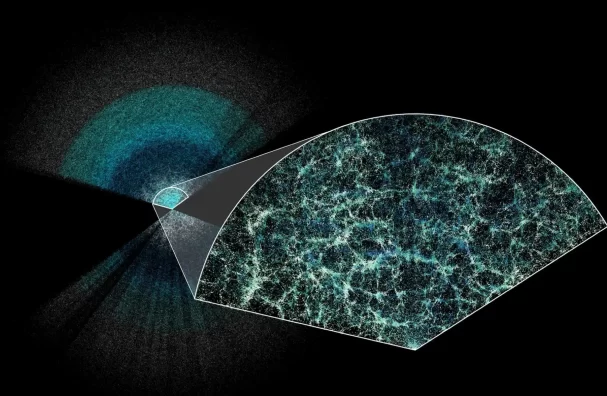
IMG SOURCE: theguardian.com
The revelation of the largest-ever three-dimensional cosmic map, featuring over six million galaxies, has stirred the scientific community. This groundbreaking finding is not only reshaping our understanding of the universe’s expansion but also triggering questions about the intriguing concept of dark energy and the universe’s future.
The cosmic map is an extraordinary creation, based on data gathered by the Dark Energy Spectroscopic Instrument (DESI) located in Arizona. Compared to previous endeavors, the new map showcases triple the number of galaxies, many of which have had their distances gauged for the first time.
Dark Energy Spectroscopic Instrument (DESI): A tool used to collect data on galaxies for the creation of cosmic maps.
The revolutionary map has allowed scientists to calculate the universe’s expansion rate at various points in history with unparalleled precision. Crucially, the research supports the accelerating expansion of the universe.
“What we are seeing are some hints that it [dark energy] has actually been changing over time, which is quite exciting because it is not what the standard model of a cosmological constant dark energy would look like.” – Dr. Seshadri Nadathur, Co-Author of the Research
The discovery presents a thrilling possibility: the dark energy, a mysterious and repelling force propelling expansion, may not be constant over time as previously believed.
If dark energy remains constant, the universe’s fate is straightforward – it will continue to expand indefinitely. However, the new map’s findings challenge this idea, opening up the possibility of a “big crunch”.
The research, currently in preprint stage awaiting peer-review, outlines the creation of the 3D map. The team measured patterns in galaxy distribution related to baryon acoustic oscillations – sound waves from the early universe.
By calibrating distances to galaxies in the map, researchers have determined the universe’s growth rate over the last 11 billion years. The precision of these measurements, given the galaxies’ vast age and distance, is mind-boggling.
The findings have fuelled exciting debates about theories of gravity and the need for dark matter, challenging our existing understanding of these concepts.
Other experts in the field, while acknowledging the significance of the DESI and the new data, have urged caution. They highlight the limited understanding of how dark energy operates and suggest taking early results with a grain of salt.
